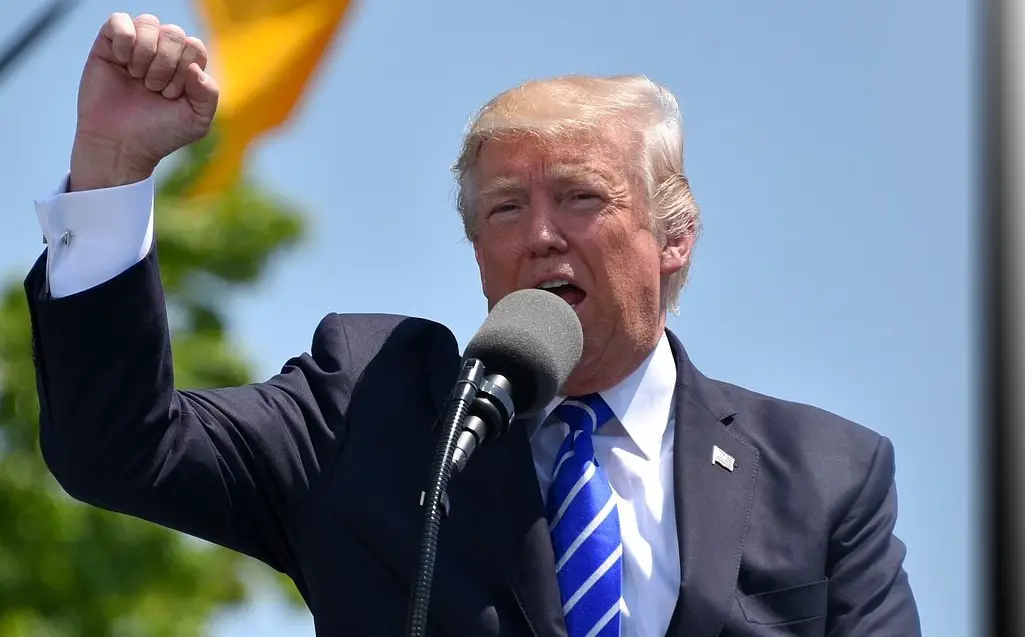The Trump administration is well-known for its high staff turnover rate. In fact, according to Business Insider, Trump’s staff turnover is the highest of any U.S. administration in modern history. Dozens of people, ranging from senior advisers to Cabinet officials to attorneys, have either resigned from the administration or been outright fired since Trump’s election.
As 2018 ends and 2019 begins, it seems fitting to examine who has left the administration since 2016, whether they willingly stepped down or were pushed out.
1. Michael Flynn
Position: National Security Adviser
Replacement: Lieutenant General H. R. McMaster
Flynn served as Trump’s national security adviser for a brief 24 days before being one of the first officials forced out of the administration for misleading the FBI and the vice president about his dealings with Russia. Last year, Flynn pled guilty to lying to the FBI about his involvement with Russian officials, and has been cooperating with Robert Mueller’s investigation into Russian interference in the 2016 election ever since.
In return for his cooperation, Mueller has suggested that Flynn receive little to no jail time. Flynn was scheduled to have a sentencing on Dec. 18, but was allowed to delay the sentencing until he was finished working with investigators.
2. Sally Yates
Position: Acting Attorney General
Replacement: Dana Boente
Yates was one of President Obama’s appointees, so it’s no surprise that she was quickly replaced by Trump, just 10 days after he entered office. Her views obviously did not align with the rest of the administration, notably with her refusal to uphold the so-called “Muslim ban,” which stopped citizens from several majority-Muslim countries from entering the U.S.
The White House claimed that Yates “betrayed the Department of Justice.” Her successor, Dana Boente, instructed lawyers in the DOJ to follow the president’s instructions just hours after being sworn in.
In Yates’ defense, she said that she was simply trying to make sure that the DOJ was defensible and doing what was morally right.
3. James Comey
Position: FBI Director
Replacement: Christopher Wray
Comey lasted slightly longer than Yates and Flynn, and was fired by Trump in May 2017. He was responsible for handling the FBI investigation in Hillary Clinton’s email scandal, and it’s theorized that he cost her the 2016 election by releasing details of the investigation shortly before Election Day.
When Trump entered office and the Russian controversy began, Comey was in charge of the FBI investigation into Russian interference in the 2016 election. Comey’s firing was, and still is, contentious, because many believe that Trump could be guilty of obstruction of justice.
At the time, Trump claimed that he was acting on the recommendations of Attorney General Jeff Sessions and Deputy Attorney General Rod Rosenstein, but Trump was reportedly angry with Comey for not publicly announcing that Trump himself was not under investigation for the Russia scandal.
4. Walter Shaub
Position: Director of the Office of Government Ethics
Replacement: David Apol, Acting Director of the Office of Government Ethics
Shaub was set to serve as the director of the Office of Government Ethics until January 2018, but he chose to resign six months early after clashing with the Trump administration over Trump’s finances and potential conflicts of interest. Shaub encouraged Trump to liquidate his business and personal holdings in order to remain ethical, claimed that he was “fighting for the ethics program” and that Trump would benefit from his advice. However, the administration chose to ignore Shaub’s suggestion.
After this battle, Shaub decided to leave office. “There isn’t much more I could accomplish at the Office of Government Ethics, given the current situation,” Shaub said. After resigning, the former director continued to express his frustration with the Trump administration, arguing that the administration was damaging the image of American ethics, and called the United States “close to a laughingstock.”
5. Sean Spicer
Position: Press Secretary
Replacement: Sarah Huckabee Sanders
Spicer resigned after Anthony Scaramucci was appointed as communications director in the middle of July. Spicer informed the president that he disagreed with Scaramucci’s appointment, and refused Trump’s offer to continue as press secretary.
The former press secretary was known for his “combative style” when speaking with reporters, and even had entire “SNL” skits dedicated to him. He also was surrounded by controversy, from lying about the size of Trump’s inauguration crowd to comparing the Syrian president, Bashar al-Assad, to Adolf Hitler. Spicer was arguably one of the most satirized characters of the Trump administration, despite the fact that his time in office lasted just six months and a day.
6. Reince Priebus
Position: Chief of Staff
Replacement: John Kelly
Priebus resigned less than a week after Spicer’s departure, news that Trump chose to announce over Twitter. Priebus’ time in the White House was chaotic and filled with leaks, “backstabbing, factionalism and inefficacy.”
Along with Spicer, Priebus disapproved of Scaramucci’s appointment as the director of communications. He and Scaramucci fought publicly, and Scaramucci falsely accused Priebus of leaking his financial information, along with calling the former chief of staff a “paranoid schizophrenic.” Priebus also reportedly clashed with chief strategist Steve Bannon, and was blamed by Trump for the dysfunction within the White House, including the frequent leaks.
7. Anthony Scaramucci
Position: Communications Director
Replacement: Hope Hicks
Scaramucci replaced Michael Dubke as communications director in July 2017, and brought chaos and disorder into the White House with him, aiding in the resignation of the press secretary, Spicer, and the chief of staff, Priebus.
Scaramucci, also known as “the Mooch,” was perhaps most well-known for what is described as “an expletive-laden interview” with The New Yorker, where he made several blatantly rude statements regarding other members of the administration.
The Mooch was fired after just 10 days in office on Chief of Staff John Kelly’s recommendation.
8. Steve Bannon
Position: Chief Strategist
Replacement: No one
Like many of the other officials in the Trump White House, Bannon’s time in D.C. was nothing short of chaotic. The former Breitbart executive chairman was instrumental in helping Trump win the presidential election and “was considered the main conduit between Trump and his base of far-right voters.”
Bannon was known for his frequent arguments with other White House officials and aides, and many consider “his removal a victory for Mr. Kelly.” Trump himself worried that Bannon was responsible for the leaks that had become a hallmark of his presidency, and also accused Bannon of “taking too much credit for [Trump’s] successes.”
9. Tom Price
Position: Secretary of Health and Human Services
Replacement: Alex Azar
Price is one of the few officials whose resignation was not due to a feud within the administration, but instead based on ethics violations. He was criticized for using taxpayer money to take expensive flights, which went directly against Trump’s proclaimed mission to “drain the swamp.”
Plus, the secretary tried to fix matters with a half-baked apology and partially reimbursement, which upset both the president and the public. Price also failed to complete one of Trump’s other main missions, repealing and replacing Obamacare.
10. Rex Tillerson
Position: Secretary of State
Replacement: Mike Pompeo
Tillerson’s firing came as a surprise to almost everyone, including the secretary himself. The only warning the former oil executive received was from Chief of Staff Kelly, who told him, “you may get a tweet,” which is exactly how Trump chose to announce Tillerson’s firing and his replacement, CIA Director Mike Pompeo. Trump didn’t personally call Tillerson until three hours after the tweet was sent.
Tillerson reportedly never got along with Trump or the other staff in the administration, and even called Trump a “moron” on one occasion. Among other things, Tillerson disagreed with Trump’s decision to leave the Paris climate accord and the two supported different methods of handling the North Korean nuclear crisis.
11. Andrew McCabe
Position: Deputy FBI Director
Replacement: David Bowdich
McCabe was fired by Attorney General Sessions the day before he planned to retire and become eligible to receive his pension. According to Sessions, he was forced to fire McCabe after reports emerged concluding “that Mr. McCabe had made an unauthorized disclosure to the news med and lacked candor — including under oath — on multiple occasions.” This “unauthorized disclosure” related to the investigation into Clinton’s emails in October 2016.
McCabe also oversaw the investigation into Russian ties to the Trump campaign. The former deputy director has expressed concerns that he was fired due to the knowledge he has and the actions he has taken relating to the Russian scandal. He also argued that “the Trump administration [was] trying to discredit him as a potential witness,” and that “the real target… [was] Mr. Mueller’s investigation.” As New York Times reporter Matt Apuzzo points out, should McCabe be discredited as a witness, Trump could raise questions about the Russia investigation as a whole.
12. Hope Hicks
Position: Communications Director
Replacement: Bill Shine
Hicks was the fifth communications director in Trump’s administration before she resigned in February 2018. She had been working with Trump even before his presidential campaign, so many people thought Hicks connected well with the president.
Hicks resigned just a day after testifying about the Russia scandal in front of the House Intelligence Committee, although New York Times reporter Maggie Haberman insisted that Hicks’ resignation had nothing to do with the hearing.
Others have speculated that the former communications director may have resigned due to her involvement with the Rob Porter scandal, a former Trump staffer who had an alleged history of spousal abuse. Although, most think that it’s more likely that Hicks simply tired of the job and potentially Trump.
13. Scott Pruitt
Position: Environmental Protection Agency Administrator
Replacement: Andrew Wheeler
Like Price, Pruitt was under investigation for several ethics violations, reportedly at least 13. He allegedly stayed in unnecessarily costly hotels, took expensive first-class flights and used his position to gain favors for himself and his family.
These investigations are likely what cost him his job, as well as a report that “Mr. Pruitt had asked Mr. Trump to fire Jeff Sessions… so that Pruitt could run the Justice Department.” Furthermore, there were more reports that emerged suggesting that Pruitt “retroactively altered his public schedule, potentially committing a federal crime.”
Pruitt was always considered an odd fit for the E.P.A. Administrator by many Democrats because he had leveled so many lawsuits against the agency in the past. However, the former administrator was reportedly one of Trump’s favorite officials due to his success in undoing environmental regulations put in place by Obama.
14. Don McGahn
Position: White House Counsel
Replacement: Pat Cipollone
McGahn always had a difficult role to play in the White House. He was responsible for counseling the president on legal matters and for serving as a witness against Trump in the Mueller investigation. McGahn was a key figure in the efforts to put Neil Gorsuch and Brett Kavanaugh on the Supreme Court, but he also worked to make sure the president did not fire Mueller or do anything that could jeopardize him in the Russia investigation.
Despite McGahn’s success in stacking federal courts with conservatives, he also “spent at least 30 hours with Mr. Mueller’s investigators, laying out how Mr. Trump tried to interfere with or quash the inquiry.”
The former counsel had planned to leave the White House at some point in late 2018, but Trump surprised many, including McGahn, by instead tweeting that McGahn would leave after Kavanaugh was confirmed.
15. Jeff Sessions
Position: Attorney General
Interim Replacement: Matthew Whitaker
Sessions was often criticized by Trump, notably because Sessions recused himself from the Mueller investigation and “never took control of the Justice Department,” according to the president. Trump also claimed that “the only reason I gave [Sessions] the job is because I felt loyalty.”
Trump had been working to replace Sessions for quite some time, according to New York Times reporters Peter Baker, Katie Benner and Michael D. Shear, and was holding off to avoid negatively affecting the midterms, “so it came as little surprise when Mr. Sessions was asked to resign the day after the midterms were over.” Trump was known for often tweeting his criticism of Sessions, and the two even had public arguments over Trump’s attempts to politically influence the Justice Department.
Sessions has apparently tried to resign before, but was once stopped by Priebus and then the current White House chief of staff, Kelly.
Trump’s replacement for Sessions, Whitaker, is thought to have been chosen as a way to force out Mueller and end the Russia investigation.
16. John Kelly
Position: Chief of Staff
Interim Replacement: Mick Mulvaney
Kelly was initially chosen by Trump in the hopes that he would “instill more discipline” in the White House as a former general. However, Kelly allegedly gave up trying to control Trump “and ultimately resigned himself to a stalemate of coexistence,” often “complaining to his colleagues about how miserable he was in the job.”
Earlier in 2018, Kelly issued a statement claiming that he would remain as chief of staff through 2020, but even Trump himself didn’t believe Kelly. In the days before Kelly resigned, reports emerged suggesting that the president and Kelly had stopped speaking.
With Kelly stepping down, many think there could be a ripple effect within the White House, causing more staff and officials to leave as well, including Secretary of Homeland Security Kirstjen Nielsen and Deputy Chief of Staff Zachary Fuentes.
Trump had hopes that Nick Ayers, Vice President Pence’s chief of staff, would replace Kelly, but Ayers announced his resignation soon after Kelly’s, so it is currently unclear who will replace Kelly.
Mick Mulvaney, the current budget director, was named the acting chief of staff.
17. Ryan Zinke
Position: Interior Secretary
Replacement: David Bernhardt (most likely)
Zinke was another key official under multiple ethics investigations “into his business dealings, travel and policy decisions.” Trump announced his departure over Twitter, although before Kelly left, he warned Zinke to leave before Zinke could be fired for his ethics violations.
Among other scandals, Zinke is accused of improperly using government vehicles, using taxpayer money for unnecessary flights and making decisions based on lobbying money.
Zinke, along with Pruitt, worked to deregulate governmental environmental regulations, and as such was well-liked by Trump, but Trump “disliked the bad press that was amassing for Mr. Zinke.”
18. James Mattis
Position: Defense Secretary
Replacement: Not yet announced
Mattis was the most recent official to leave the administration; his resignation was announced on Dec. 20. Unlike most of the other officials who have left, Mattis made it clear in his resignation letter that he disagreed with Trump’s views on foreign policy. “Because you have the right to have a Secretary of Defense whose views are better aligned with yours on these and other subjects, I believe it is right for me to step down from my position,” Mattis said.
Mattis’ resignation came the day after Trump decided to pull troops out of Syria, disregarding advice from senior advisors who said that the decision was a bad choice. Sen. Mark Warner called Mattis “an island of stability amidst the chaos of the Trump administration,”, and reportedly continued to work within the Trump administration “to protect the United States’ 1.3 million active-duty troops.”
















